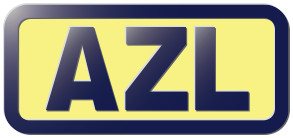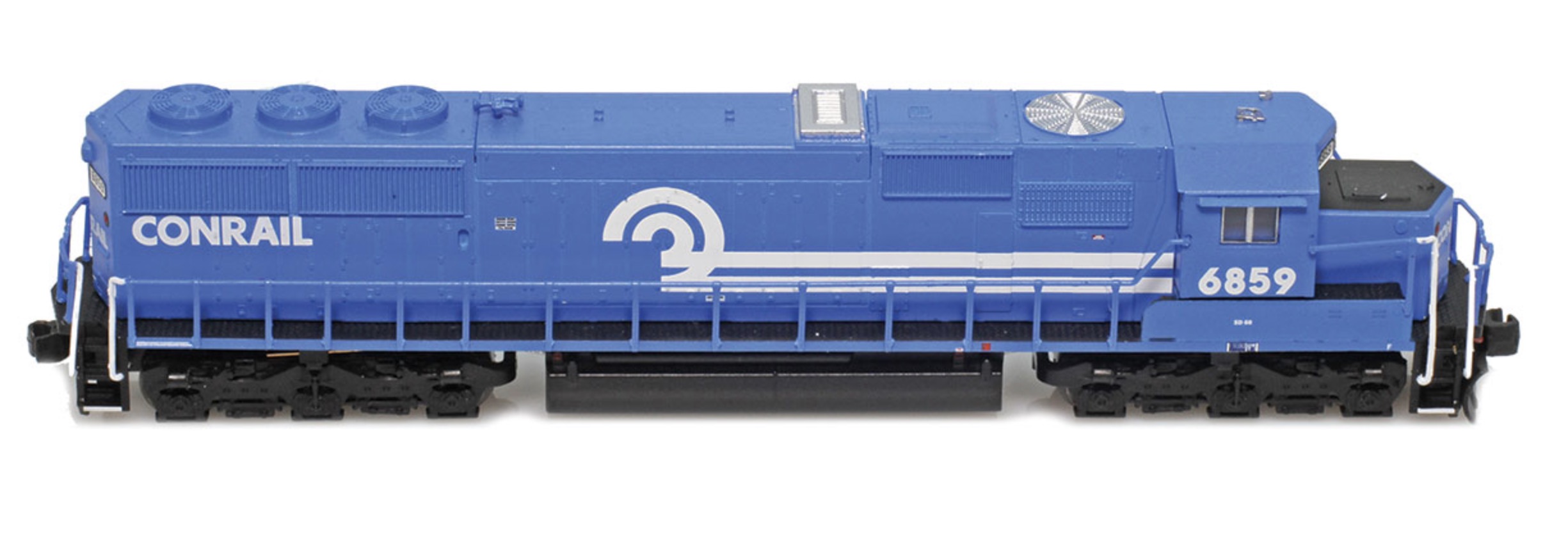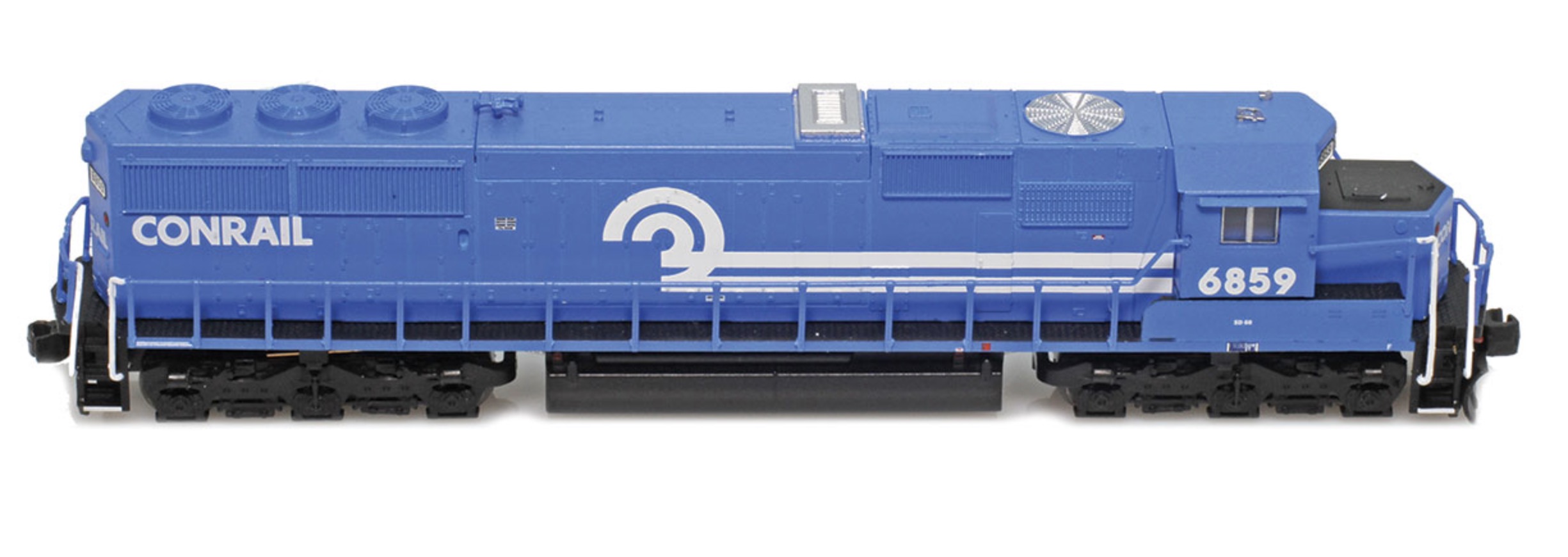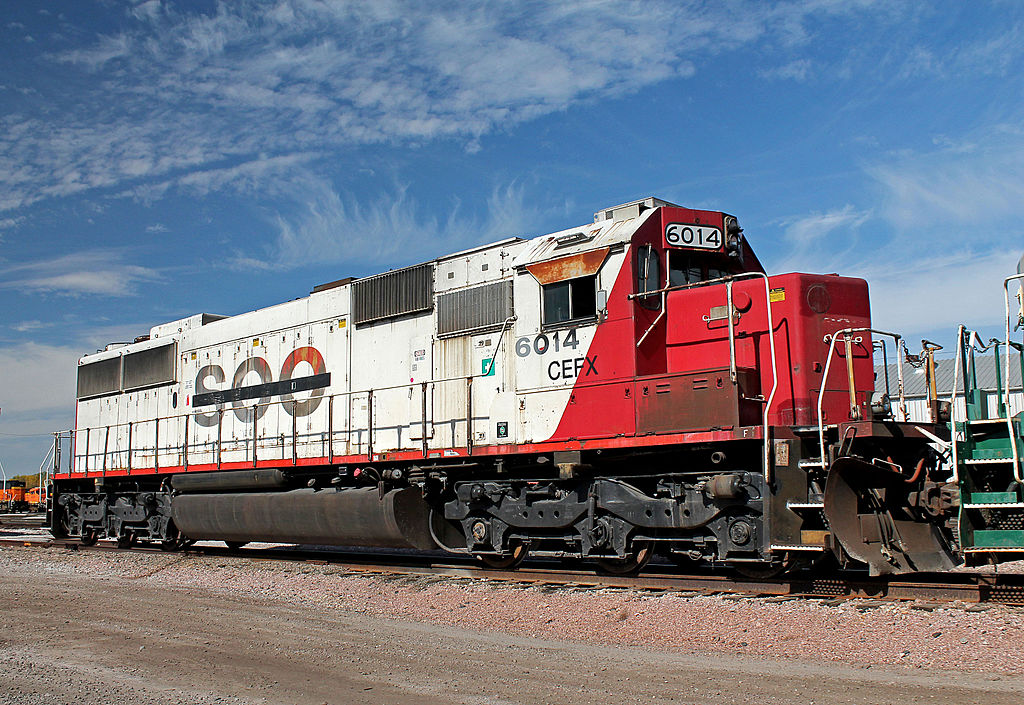Prototype History: The EMD SD60 is a 3,800 horsepower (2,800 kW), 6-axle diesel-electric locomotive built by General Motors Electro-Motive Division. Intended for heavy-duty drag freight or medium-speed freight service. It was introduced in 1984, and production ran until 1995.
The development of the 16-cylinder EMD 50 and 60 series locomotives in the late 1970s and early 1980s was spurred by the introduction of 3,600 horsepower (2,700 kW) 16-cylinder GE B36-7 (B-B) and GE C36-7 (C-C) locomotives by EMD's main competitor General Electric. EMD previously manufactured the 3,600 hp (2,700 kW) 20-cylinder SD45 and SD45-2 locomotives, but they had a reputation for high fuel consumption. In 1980, the SD50 model was added to the EMD Catalog. However, the SD50's electrical reliability was poor and, similarly, the 3,500 horsepower (2,600 kW) 16-645F engine had poor mechanical reliability, both believed to be largely due to excessive vibration from the 950 maximum rpm of the 645F prime mover. It was time to develop a replacement for the venerable 645 engine which, in its earlier 16-645E form, had proved to be exceptionally reliable. EMD therefore quickly commenced development of the SD60 series, which would eliminate the weaknesses of the SD50. The lessons learned in developing the 645F crankcase and crankshaft (for the earlier 20-645E, and the then-current 16-645F) were incorporated in the replacement, the 710G, first employed in the SD60. Although the carbody and frame are nearly indistinguishable from the earlier SD50, the SD60 featured the new 16-cylinder EMD 710G3A prime mover, AR-11 traction alternator, D-87 traction motors and a microprocessor-based control system that governed various electrical systems within the locomotive (e.g., wheel slip and transition).
From Wikipedia
Read more on American-Rails.com
The development of the 16-cylinder EMD 50 and 60 series locomotives in the late 1970s and early 1980s was spurred by the introduction of 3,600 horsepower (2,700 kW) 16-cylinder GE B36-7 (B-B) and GE C36-7 (C-C) locomotives by EMD's main competitor General Electric. EMD previously manufactured the 3,600 hp (2,700 kW) 20-cylinder SD45 and SD45-2 locomotives, but they had a reputation for high fuel consumption. In 1980, the SD50 model was added to the EMD Catalog. However, the SD50's electrical reliability was poor and, similarly, the 3,500 horsepower (2,600 kW) 16-645F engine had poor mechanical reliability, both believed to be largely due to excessive vibration from the 950 maximum rpm of the 645F prime mover. It was time to develop a replacement for the venerable 645 engine which, in its earlier 16-645E form, had proved to be exceptionally reliable. EMD therefore quickly commenced development of the SD60 series, which would eliminate the weaknesses of the SD50. The lessons learned in developing the 645F crankcase and crankshaft (for the earlier 20-645E, and the then-current 16-645F) were incorporated in the replacement, the 710G, first employed in the SD60. Although the carbody and frame are nearly indistinguishable from the earlier SD50, the SD60 featured the new 16-cylinder EMD 710G3A prime mover, AR-11 traction alternator, D-87 traction motors and a microprocessor-based control system that governed various electrical systems within the locomotive (e.g., wheel slip and transition).
From Wikipedia
Read more on American-Rails.com
Road Name History: The Consolidated Rail Corporation, commonly known as Conrail (reporting mark CR), was the primary Class I railroad in the Northeast U.S. between 1976 and 1999. Conrail is a portmanteau of "consolidated" and "rail" from the name of the company.
The U.S. federal government created Conrail to take over the potentially profitable lines of multiple bankrupt carriers, including the Penn Central Transportation Company and Erie Lackawanna Railway. With the benefit of industry-wide regulatory requirements being reduced (via the 4R Act and the Staggers Act), Conrail began to turn a profit in the 1980s and was turned over to private investors in 1987. The two remaining Class I railroads in the East, CSX Transportation and the Norfolk Southern Railway (NS), agreed in 1997 to split the system approximately equally, returning rail freight competition to the Northeast by essentially undoing the 1968 merger of the Pennsylvania Railroad and New York Central Railroad that created Penn Central. Following Surface Transportation Board approval, CSX and NS took control in August 1998, and on June 1, 1999, began operating their portions of Conrail.
The U.S. federal government created Conrail to take over the potentially profitable lines of multiple bankrupt carriers, including the Penn Central Transportation Company and Erie Lackawanna Railway. With the benefit of industry-wide regulatory requirements being reduced (via the 4R Act and the Staggers Act), Conrail began to turn a profit in the 1980s and was turned over to private investors in 1987. The two remaining Class I railroads in the East, CSX Transportation and the Norfolk Southern Railway (NS), agreed in 1997 to split the system approximately equally, returning rail freight competition to the Northeast by essentially undoing the 1968 merger of the Pennsylvania Railroad and New York Central Railroad that created Penn Central. Following Surface Transportation Board approval, CSX and NS took control in August 1998, and on June 1, 1999, began operating their portions of Conrail.
Brand/Importer Information:  AZL is the leader in North American Z scale locomotives and rolling stock. Since 2000, AZL has released a vast variety of freight, passenger and locomotives. AZL continues to push the boundaries of Z scale with amazing details and incredible performance. No matter if you are looking to run steam, or the most modern diesels, AZL has something for you.
AZL is the leader in North American Z scale locomotives and rolling stock. Since 2000, AZL has released a vast variety of freight, passenger and locomotives. AZL continues to push the boundaries of Z scale with amazing details and incredible performance. No matter if you are looking to run steam, or the most modern diesels, AZL has something for you.






